Naughty by Nature: The Most Disgusting and Deadly Flowers
Intro
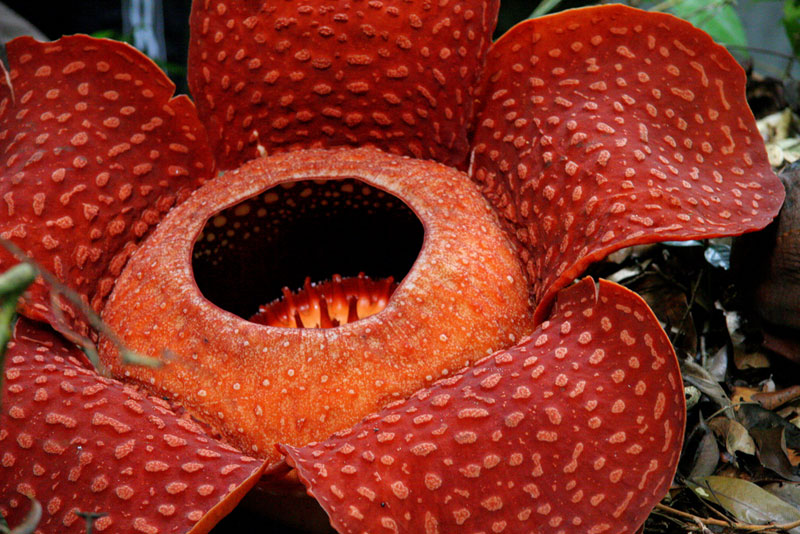
Flowers, typically bright and beautiful, also have a dark side. From carnivorous blooms to poisonous posies, not all flowers are as sweet and innocent as they appear.
Here are 10 of the world's strangest flowers and plants. Before you stop to give them a sniff, be warned: Even the blossoms that don't contain neurotoxins put out odors pungent enough to knock you over.
10. Nerium oleander the sweetly scented killer
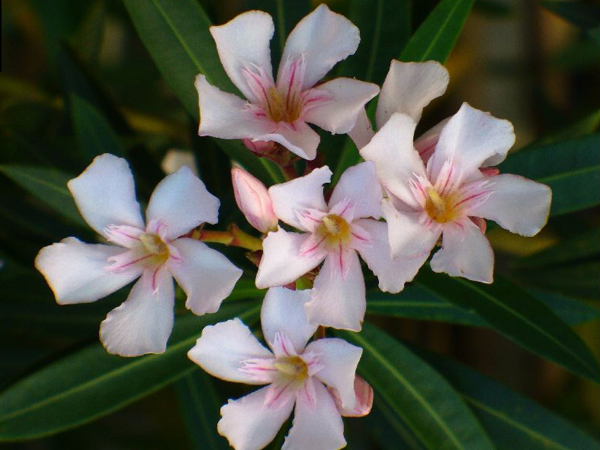
The elegant Nerium oleander, the blossoms of which are crimson, magenta or creamy white, is one of the most toxic plants in the world. Every part of the plant, from its stem to its sap, is incredibly poisonous if ingested. Even inhaling the smoke from a burning oleander is a health threat.
There have been cases of inadvertent poisonings resulting from campers using oleander branches to roast hotdogs and marshmallows. In fact, it is believed that some of Napoleon's soldiers died in Spain when they used oleander sticks to roast meat , according to "The Vegetable Kingdom; or, The Structure, Classification, and Uses of Plants" (D. Appleton & Co., 1853). The blossom is so dangerous that even the honey made by bees that used the oleander plant for nectar is poisonous.
The flower's toxins cause an irregular heart rate, which at first races and then drops to a rate far below normal, until the heart stops beating altogether.
9. Aconitum the devil's helmet
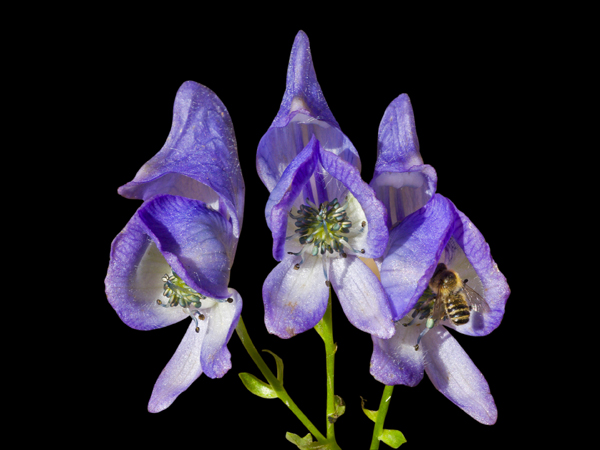
The Aconitum flower seems to be the bane of everyone: It is also known as wolfsbane (originally wolf's bane), dogbane, mousebane, leopard's bane, tiger's bane, witch's bane and women's bane. Like the oleander, it is a beautiful but deadly garden plant.
Its downward-curved periwinkle petals resemble a friar's cap, which explains its non-bane monikers, such as the Devil's helmet, monkshood and blue rocket. There are more than 250 species of Aconitum, and it is a member of the buttercup family. Just a few drops from the plant's roots can cause paralysis of the cardiac muscles or of the entire respiratory system, resulting in death.
During the Middle Ages, witches used the wolfsbane in their "flying" potions because of the feelings of dizziness and numbness brought on by its irregular heartbeat side effects . They also used them in love potions, but because these poisonous elixirs often ended up killing the paramour, the plant also earned the name of Mourning Widow.
8. Castor oil plant the most poisonous in the world
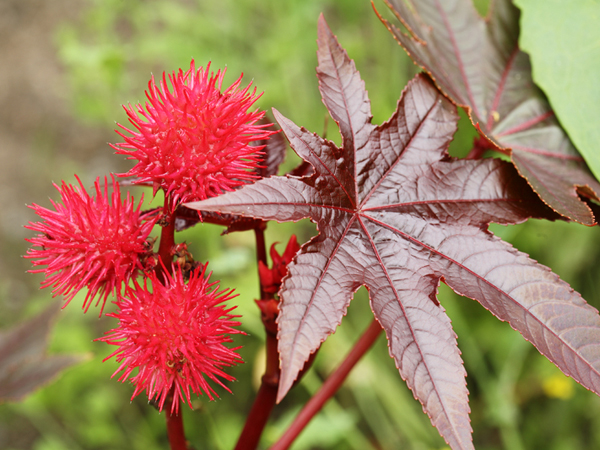
The most poisonous plant in the world according to the Guinness Book of World Records, the Castor oil plant is also known as the "palm of Christ", or Palma Christi, which stems from the plant oil's ability to heal wounds. However, it also has the power to kill, as just one milligram of the plant's poison can kill an adult, according to the Centers for Disease Control (CDC).
For centuries, the Chinese have used castor oil as a medicine and when bandaging injuries. The plant is also used to produce biodiesel fuel in Brazil, where it is called mamona oil. Castor oil can also be found in chocolate when it is used as a cocoa butter substitute, as well as in soap, laxatives, ink and plastics .
The flowering plant's seeds, however, contain ricin, an extremely poisonous toxin. Ricin is also present in lower concentrations in the plant's glossy leaves, which are most often dark green or burgundy. The castor oil plant's flowers resemble spiky, hot pink pom-poms and are especially dangerous to small children.
7. Dracunculus vulgaris Dracula's flower
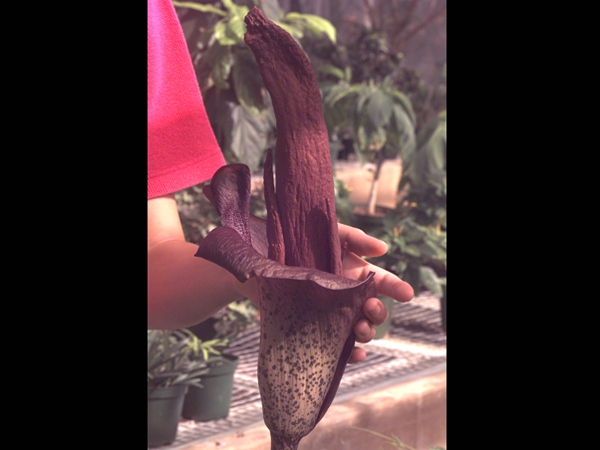
Native to the Mediterranean, the Dracunculus vulgaris is also known as the Voodoo Lily, the Snake Lily and the Stink Lily, as it releases an aroma that reeks of rotting meat when it blooms. This is the flower's way of attracting flies , which help it pollinate other Voodoo Lillies to keep the species alive. Fortunately, the smell usually only lasts for one day.
The dracunculus vulgaris's namesake comes from its unique appearance a black spike, called a spadix, entwined by purple petals that resemble Dracula's cape. The spadix can grow more than four feet tall.
The sinister blossom, much like its namesake , hates direct sunlight and flourishes in the shade. All parts of plant are poisonous if ingested and touching the plant may result in skin irritation or an allergic reaction.
6. Abrus precatorius the deadly love bean
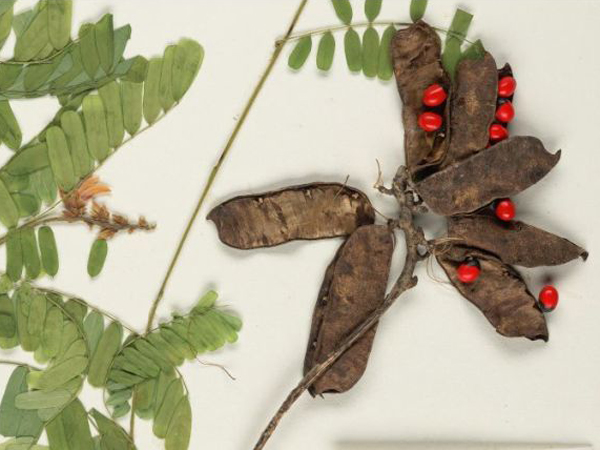
Also known as Jequirity, the coral bead plant, crab's eye, creeper, lucky bean, prayer bead, red beadvine and rosary pea, the Abrus precatorius most likely originated in southeast Asia. The Jequirity plant resembles pea pods that are about one inch long and full of black-tipped scarlet seeds that are extremely poisonous. The poison is called abrin, which is similar to ricin, but is milder. Despite its toxicity, Jequirity has long been a symbol of love in China, where it is called xiang si dou, or "mutual love bean."
During the 16th century, Dutch traders brought Jequirity seeds to Europe and America to sell them as beads. In Holland, the poisonous seeds were combined with pearls to make necklaces , according to "Poisonous Plants of the Malay Peninsula" (Botanic Gardens Department, 1898).
Making jewelry using jequirity seeds is very dangerous, and there have been cases where people died from pricking their fingers while threading the seeds. Despite the danger, Jequirity seeds are still used as decorational beads in many of the tropical and subtropical areas of the world where it grows and can even be purchased on eBay.
5. Drosera rotundifolia The sinister sundew
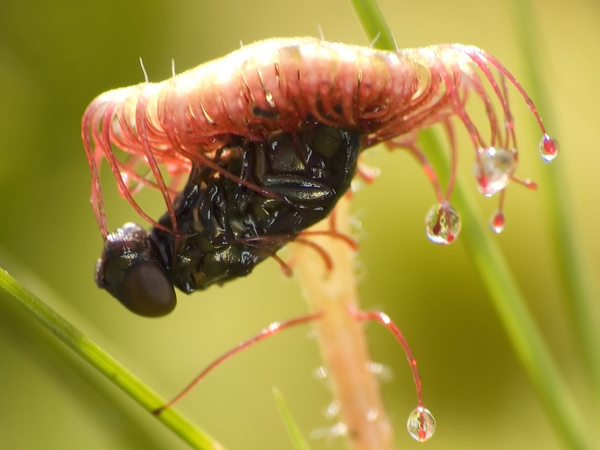
The Venus Flytrap is famous for feasting on unsuspecting insects. Many botanists believe that it evolved from another dangerous plant, the Drosera rotundifolia.
Also known as the common sundew, the Drosera rotundifolia is a small, endangered plant that catches and digests its prey, mostly devouring flies and worms. Found in the wetlands and marshes of North America, the Drosera got its name from Greek word "drosos," which means "dewdrops."
The plant's round, lime-green leaves are fringed with spiky, magenta-colored hairs, the ends of which sparkle with tiny drops of mucilage, a thick, sugary, gluey substance produced by the plant to attract its prey. Once a bug settles on the mucilage, it becomes stuck, at which point the sundew leaf wraps itself around the insect in a way similar to an octopus tentacle.
4. Rafflesia arnoldii the giant panda of the plant world
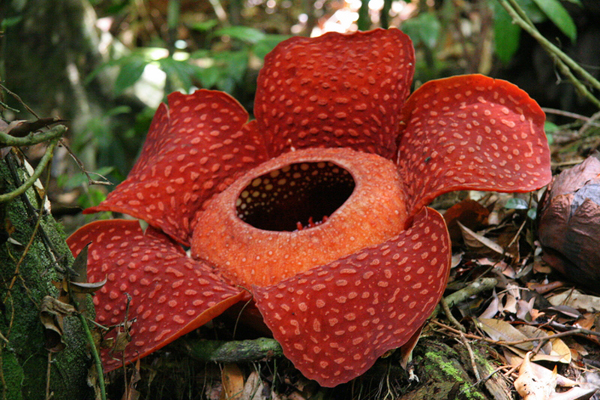
This giant, puffy, poppy-colored, polka-dot blossom looks like something from the set of "Sesame Street," but is actually the largest individual flower in the world. Its petal-to-petal girth can reach up to three feet (just under a meter) and can weigh 15 pounds (6.8 kilograms). It grows only in the rainforests of Southeast Asia, and is endangered due to overharvesting.
The Rafflesia arnoldii is actually a root parasite meaning that it has no stems or leaves and lives entirely within its host, which is usually the root of a large tree. Instead of roots, the flower has long threads of tissue that it embeds into the host, "Invasion of the Body-Snatchers"-style. After months of feeding off of the host, the flower then blooms for only five days.
When it does finally bloom, it releases a scent that reeks of rotting flesh in order to attract the flies that it needs to help with pollination. Despite its parasitic ways and nasty aroma, the Rafflesia arnoldii's cartoonish appearance has earned it an adorable nickname: "the Giant Panda of the Plant World."
3. Drakaea Glyptodon the fraudulent flower
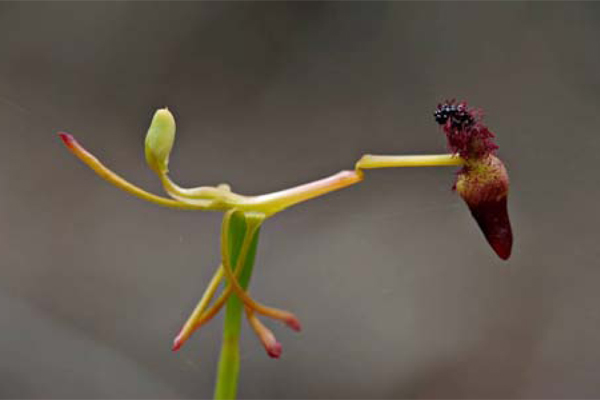
Much like the Rafflesia arnoldii and Dracunculus vulgaris, the Drakaea glyptodon also smells like raw meat, but instead of aiming to attract flies, this sneaky flower's goal is to entice wasps. The endangered orchid's slim stem tops off with a purple, bulbous blossom, called an insectival labellum, that resembled a strange insect, called the Thynnine wasp.
The flower can only be pollinated by these wasps, so it intentionally resembles the insect in hopes of attracting them. Female wasps are flightless and therefore have to wait on top of flower stems for the male wasps to scoop them up and fly off.
The plant's labellum is remarkably similar in color and structure to the female wasp's abdomen. It even produces pheromones that are extremely similar to those given off by female wasps. When a confused male wasp tries to grasp and fly off with the labellum, it instead comes in contact with the flower's pollen and flies off. For pollination to be successful, that same male must then be duped by another Drakaea glyptodont.
2. Nepenthes Truncata the predatory pitcher plant
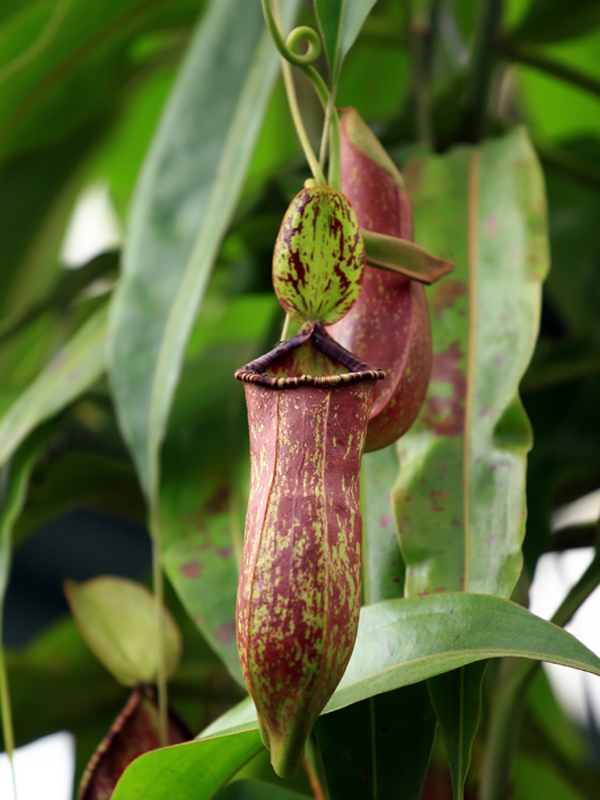
Yet another carnivorous plant, the Nepenthes Truncata not only eats bugs, but actually devours rodents whole. When a curious mouse walks atop its slippery leaves, it loses its balance and falls inside the deep pitcher plant's body, which is extremely hard to climb out of due to its slick interior walls.
The animal then drowns inside the pitcher plant and is dissolved in its digestive enzymes . The pitcher plant can grow to be more than 16 inches (40 centimeters) in height. The plants vary in colors, ranging from burgundy to a ghostly white shade, with the curved, heart-shaped petals surrounding its "mouth" often growing in a striped pattern resembling a candy cane.
The Nepenthes Truncata grows solely on the island of Mindanao in the Philippines and is extremely rare.
1. Titan Arum the corpse flower
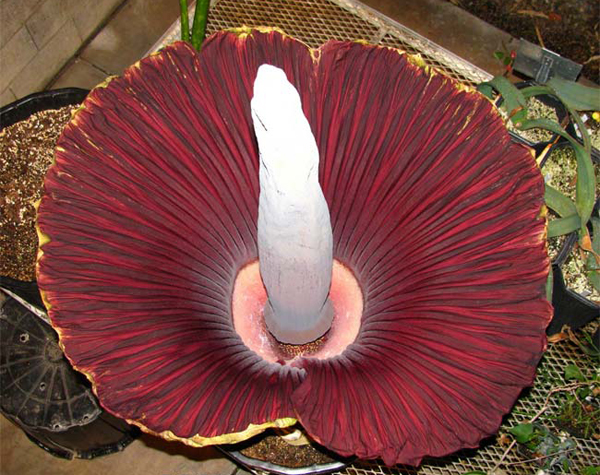
It's not unfortunate that the Titan Arum, also known as the infamous "corpse flower," only blooms for a few days of the year, considering that it reeks of rotting flesh when it finally blossoms. Opening at night, the flower's scent attracts carcass-eating insects, which pollinate its central spike, or inflorescence, until it collapses three days later.
One of the largest flowers in the world, the Titan Arum can grow 20 feet (6 meters) tall and 15 feet (4.5 meters) across in the wild. While the corpse flower can be found in many botanical gardens, including the Brooklyn Botanic Garden, in nature it only grows in the tropical forests of Sumatra in Indonesia.
The inflorescence of the corpse flower is actually composed of thousands of miniscule flowers, which heat up during the blooming process, triggering the release of the awful odor, which is caused by sulfur-based compounds. Thankfully, while the flower blooms for three days, the smell typically only lasts for about eight hours.
Sign up for the Live Science daily newsletter now
Get the world’s most fascinating discoveries delivered straight to your inbox.










